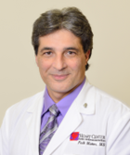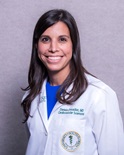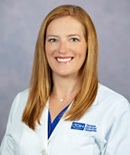Tampa General Hospital’s Heart and Vascular Institute is committed to advancing the frontiers of cardiovascular care, and this commitment is exemplified by our Coronary Microvascular Dysfunction Program. This innovative program represents a pivotal step in our ongoing mission to provide the highest quality care and tailored solutions for patients.
Coronary microvascular dysfunction (CMD) is a condition that often goes undiagnosed but can have profound implications, particularly for women’s heart health. Our Coronary Microvascular Dysfunction Program is at the forefront of CMD research, clinical care and patient support, and TGH is honored to be recognized by U.S. News and World Report as Top 50 in the Nation for Heart & Vascular care in 2025-26. Additionally, Newsweek has ranked TGH as the #1 hospital in Tampa and West Central Florida for Cardiac Care for 2025.
What Sets Us Apart
Part of the Interventional Cardiology Center of Excellence, our team includes board-certified cardiologists, interventional cardiologists and other medical professionals who have been trained to accurately diagnose and treat coronary microvascular dysfunction (CMD) as recommended by guidelines from leading national and international cardiovascular societies.
Volume & Quality
TGH established the CMD program in November 2022, and was the first site on the west coast of Florida to launch a dedicated CMD program. We are now the highest-volume center for CMD diagnosis and therapy in the state of Florida and in the top three in the nation. We routinely monitor our treatment quality with pre- and post-diagnosis assessment of patient symptoms.
Advanced Technology & Research
Tampa General Hospital is committed to being a world-class academic health system rooted in innovative technologies, clinical research and education. As part of our CMD diagnosis, we also routinely test for Vasospastic Angina with the use of intracoronary acetylcholine, a study not routinely performed in all institutions as part of CMD assessment. Additionally, we are part of the Discover INOCA study, a registry evaluating the natural history, diagnosis and treatment course of patients diagnosed with CMD. Through our clinical research initiatives, our team is defining the future management of CMD.
Become a TGH Patient
Your heart health is precious, and at Tampa General Hospital's Coronary Microvascular Dysfunction Program, we're here to support you. If you suspect you may be experiencing coronary microvascular dysfunction (CMD) or want to take a proactive approach to your cardiovascular well-being, we invite you to take the first step by becoming a TGH patient. Contact us at (813) 844-3900 to learn more about our program and to schedule an appointment with our team.
Our Leadership Team
Our nationally recognized multidisciplinary system of care ensures comprehensive patient evaluations and the best possible care.
This is achieved under the collaborative leadership and teamwork of:
 Dr. Samip Vasaiwala, MD, MSc, FACC
Dr. Samip Vasaiwala, MD, MSc, FACC
Associate Professor, USF Health Morsani College of Medicine
Coronary Programs Director, TGH Heart & Vascular Institute
 Dr. Fadi Matar, MD, FACC, FSCAI
Dr. Fadi Matar, MD, FACC, FSCAI
Medical Director for the David and Tara Ruberg Heart & Vascular Institute Research and Innovation Center of Excellence
 Dr. Daniela Crousillat, MD
Dr. Daniela Crousillat, MD
Assistant Professor of Medicine, USF Health Morsani College of Medicine
 Meghan Schmaltz APRN, NP-C
Meghan Schmaltz APRN, NP-C
CCRP & CMD APP Lead
Carmella Dawkins RMA
Interventional Cardiology Medical Assistant


